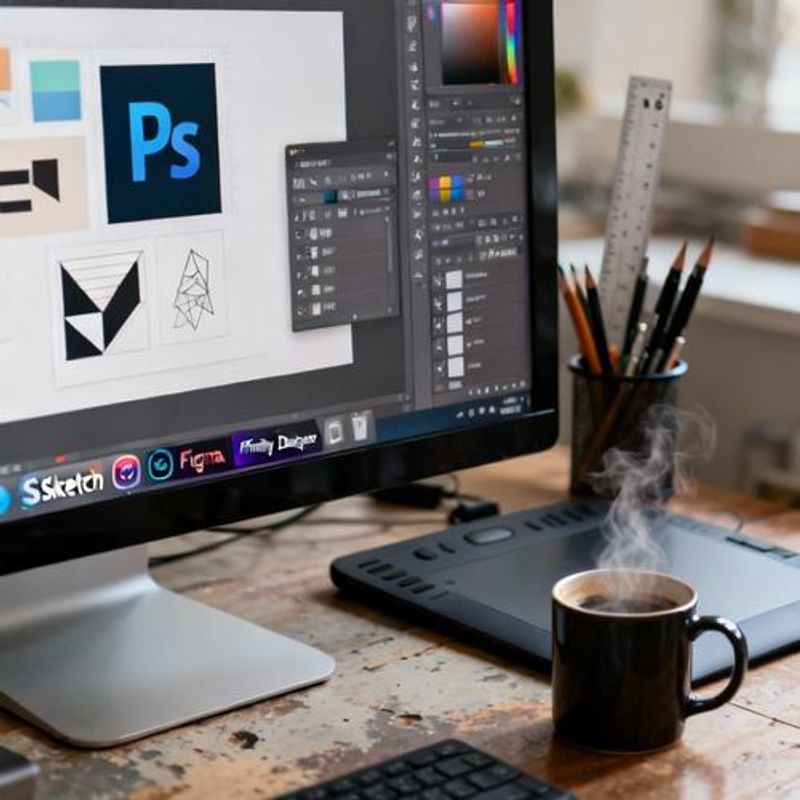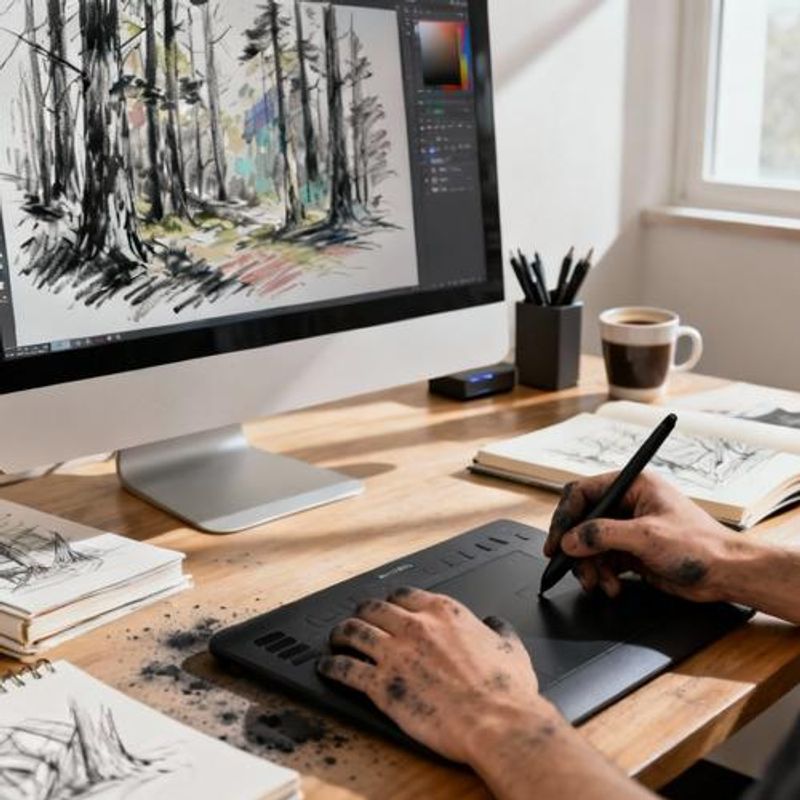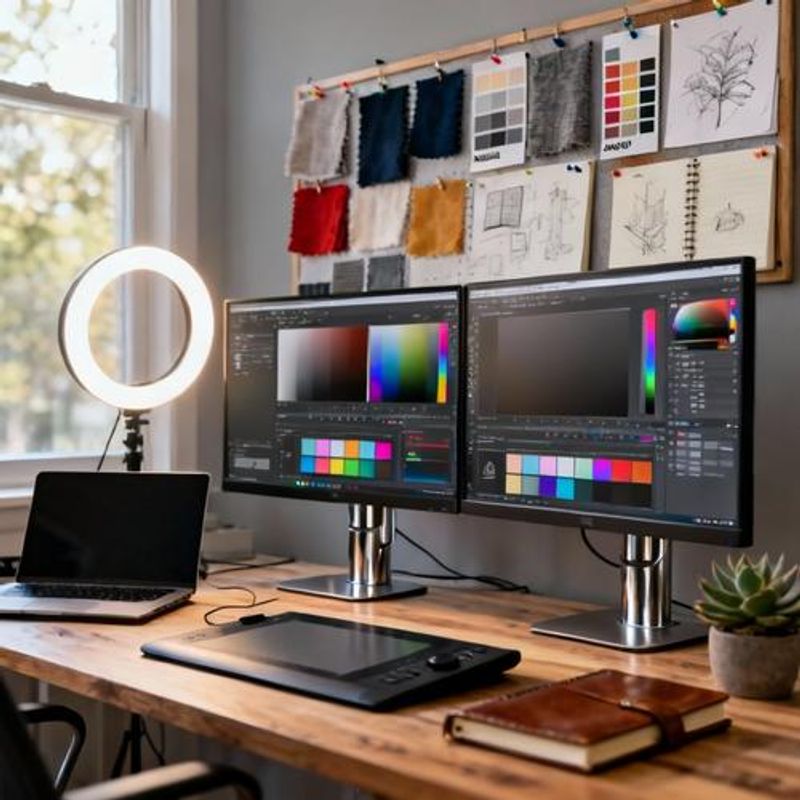Essential Tools for Graphic Design: A Beginner's Complete Guide to Starting Your Creative Journey

Starting your graphic design journey feels overwhelming when you're staring at endless software options, expensive equipment lists, and conflicting advice online. As a design student or beginner, you need a clear roadmap of essential tools for graphic design that won't break your budget but will give you professional results. This comprehensive guide cuts through the confusion to show you exactly what you need to create stunning designs from day one—whether you're working on school projects, building your portfolio, or landing your first client.

Why the Right Tools Matter for Design Beginners
Many design students make the costly mistake of either buying every tool they see recommended or trying to create professional work with inadequate free alternatives. The reality is that having the right tools for graphic design can accelerate your learning curve by months and determine whether your designs look amateur or professional. Your tools should enhance your creativity, not limit it. When you're already learning design principles, color theory, and composition, the last thing you need is to fight with clunky software or inadequate hardware that slows down your creative process.
Quick Reference: Essential Design Tools by Category
Here's your at-a-glance guide to the most important tools for graphic design, organized by priority and budget level:
- Essential Software: Adobe Creative Suite (Photoshop, Illustrator, InDesign) or Affinity alternatives
- Hardware Must-Haves: Reliable computer, high-resolution monitor, graphics tablet
- Free Alternatives: Canva Pro, Figma, GIMP for budget-conscious students
- Supporting Tools: Font libraries, stock photo subscriptions, color palette generators

Software Tools: Your Digital Creative Arsenal
Adobe Creative Suite remains the industry standard, but smart beginners have more options than ever. Adobe Photoshop excels at photo editing and digital artwork, while Illustrator handles vector graphics and logos. InDesign dominates layout design for print and digital publications. However, the subscription cost can strain a student budget. Affinity Designer and Affinity Publisher offer one-time purchases with 90% of Adobe's functionality. For vector work, consider Inkscape (free) or Vectornator. Canva Pro bridges the gap between simplicity and professional results, especially for social media and presentation design. Figma has become essential for UI/UX work and collaborative design projects.
Hardware Essentials: Building Your Creative Workspace
Your computer is your most important investment. A laptop with 16GB RAM, dedicated graphics card, and color-accurate display covers most design work. The MacBook Pro remains popular for its display quality and seamless workflow with design software, while Windows alternatives like the Surface Studio or high-end laptops offer more bang for your buck. A second monitor dramatically improves productivity—look for IPS panels with at least 1920x1080 resolution and good color reproduction. A graphics tablet transforms your digital drawing capability. The Wacom Intuos starts around $60 and provides pressure sensitivity that a mouse simply cannot match. Upgrade to a display tablet like the Wacom Cintiq when budget allows.
Budget-Friendly Tool Combinations That Actually Work
Starter Package ($0-100): GIMP + Inkscape + Canva Free + basic graphics tablet. This combination handles 80% of beginner projects. Student Package ($200-500): Adobe Creative Suite student discount + entry-level graphics tablet + second monitor. Professional Prep ($500-1000): Affinity suite + Wacom Intuos + quality monitor + font subscriptions. The key is starting with one category and expanding gradually rather than buying everything at once.

Common Mistakes That Waste Money and Time
Avoid the 'shiny tool syndrome' where you constantly chase new software instead of mastering your current tools. Many beginners buy expensive equipment before developing the skills to use it effectively. Don't neglect free resources—Google Fonts, Unsplash, and free icon libraries can significantly reduce costs. Pirated software seems tempting but risks malware, legal issues, and missing updates. Most importantly, remember that great design comes from creativity and skill, not expensive tools. A talented designer can create stunning work with basic tools, while expensive software won't fix poor design fundamentals.
Your Next Steps to Design Success
Start with one primary software tool and master it completely before adding others to your arsenal. Take advantage of student discounts wherever possible—Adobe, Sketch, and many others offer significant educational pricing. Build your tool collection gradually based on actual project needs, not theoretical requirements. Focus on learning design principles alongside your tools; the best software in the world won't compensate for poor fundamentals. Consider joining design communities and forums where you can get tool recommendations based on real-world experience. Remember, professional designers often work with surprisingly minimal tool sets—master the essentials before expanding. Your creative vision and design skills will always matter more than having the latest and greatest tools for graphic design.